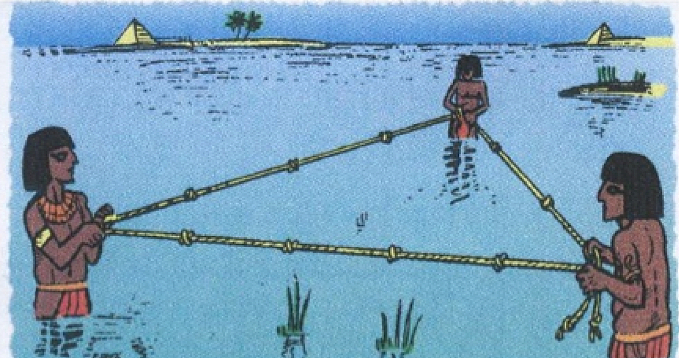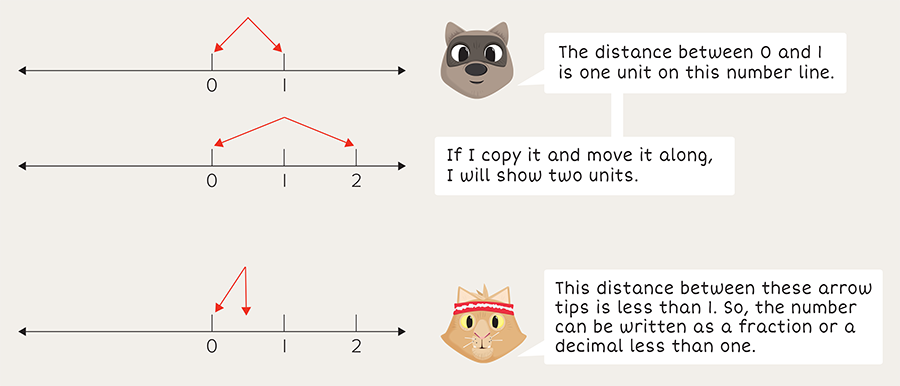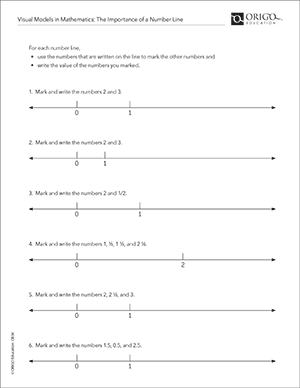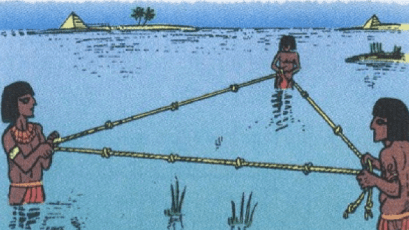Insights
Visual Models in Mathematics: The Importance of a Number Line (Part 3)
This article is the third in a four-part series on Visual Models in Mathematics. Read this post and check out the other articles in our series:
- Part 1: Visual Models in Mathematics: Numerals – The First Images (Part 1)
- Part 2: Visual Models in Mathematics: The First Classroom Examples (Part 2)
- Part 3: Visual Models in Mathematics: The Importance of a Number Line (Part 3)
- Part 4: Visual Models in Mathematics: Graphic Organizers That Accelerate Learning (Part 4)
The number line: a powerful tool in the elementary math classroom
Simple tools have been used to help make giant leaps to understand or explain new ideas in science, mathematics, and technology. One of the more important “inventions” for mathematics has been the number line. About 2,500 years ago the Ancient Egyptians could be credited with making a very practical number line. They tied knots equal distance along a rope that was used to measure length by counting the number of spaces. In the picture, Egyptian rope measurers have formed a triangle with 3 spaces, 4 spaces, and 5 spaces respectively along each side. The rope was one single length so it could be used to measure buildings, walls, or fields.

Photo courtesy of Key Curriculum Press1
The rope was a visual tool that worked well with real things. It was good for measurement as well as calculations that involved “straight forward” operations such as addition and multiplication. However, by the 1600s, mathematicians were aware of numbers that they could not easily explain with “real things.” It is interesting to note that Fahrenheit chose 32 as the number for the freezing point of water when he created the first accurate thermometer. He seemed to know about using a number line for temperatures, but did not have a way to describe a reading less than 0. His choice of 32 insured, at least for his time, that all temperatures would be numbers greater than 0.
Representing Negative Numbers
The credit for creating a number line to show numbers less than 0 is usually given to the Englishman John Wallis. In his first illustrations, he used a solid line for 0 and the positive numbers and a dotted line for the negative numbers.

About the same time, the Dutch mathematician Rene´ Descartes used two lines to create the x-y coordinate system which served to reinforce the approach that Wallis used. The use of number lines provided ways to show negative numbers, and more importantly, these tools were used to link all numbers. With these tools, huge strides where made to explore new mathematical ideas because there was a way to work with numbers using just a single visual model!
Number Lines in the Classroom
When a number line is first used in the classroom it is a good idea to show a line extending in both directions without referring to the left side of 0 (the origin). If 0 is shown as an end-point, the example is a ray and not a true line.
In the first experiences it is important to focus on the distance from 0 to 1. This is called the unit (or one-unit) length that gives meaning to all numbers along the line. For example, knowing the length of one-unit means that doubling or tripling that distance gives a way to interpret 2 or 3 units. Marking a distance from 0 to a point less than 1 gives a distance that can be written as a fraction or decimal less than 1. The distance from 0 to 1 can be any length, but once it is determined, the value of all other numbers is decided.

Why Are Number Lines Important?
Number lines are important because they present numbers in real life. Primarily, because they enable negative numbers to be represented in a way that made sense. A secondary and equally important outcome was a way to show all real numbers, including the mysterious irrational numbers such as π, – π, √2, -√2, etc. This result meant that the number line became a versatile and powerful visual tool to help students understand numbers.
Click on the ORIGO ONE video for more about how number lines can be used to represent all real numbers.
Using number lines to represent all numbers from ORIGO Education on Vimeo.
Use the support page shown below to facilitate a productive conversation about number lines in your classroom. (Click on the Resource Hub link below to download the support page.)

The next blog will discuss the special features of visual models that are useful in the mathematics classroom. This will include tools that might be used in special ways (e.g. equivalent fraction strips). The discussion will include visual models that are called “graphic organizers” that are used with familiar manipulatives such as counters and cubes to illustrate powerful ideas.
Reference
1 Serra, Michael. Discovering Geometry an Inductive Approach. Key Curriculum Press, 1997.
Click HERE for the downloadable resources for this article!
About the Author
Calvin Irons cofounded ORIGO Education with James Burnett in 1995. Cal has been involved in mathematics education for over 50 years. He started his career as a specialist teacher of mathematics in Iowa after completing his BA and MA at the University of Northern Iowa in 1967. Dr. Irons received his PhD from Indiana University in 1975 (the dissertation topic was the teaching of division). In 1975, he accepted a position at the Queensland University of Technology, Brisbane, Australia where he has been involved in the teaching and the development of mathematics curricula for elementary schools. He has received outstanding achievement awards from the university for his work and in 2014 was the student’s nominee for University Outstanding Teacher of the Year from a university faculty of over 3000 professors. He is the author/co-author of over 600 books or articles including the award-winning ORIGO Stepping Stones mathematics program.
About ORIGO Education
ORIGO Education is dedicated to making learning meaningful, enjoyable and accessible for all students and their teachers with Pre-K and Elementary print and digital instructional materials, as well as professional learning for mathematics.
![]()




